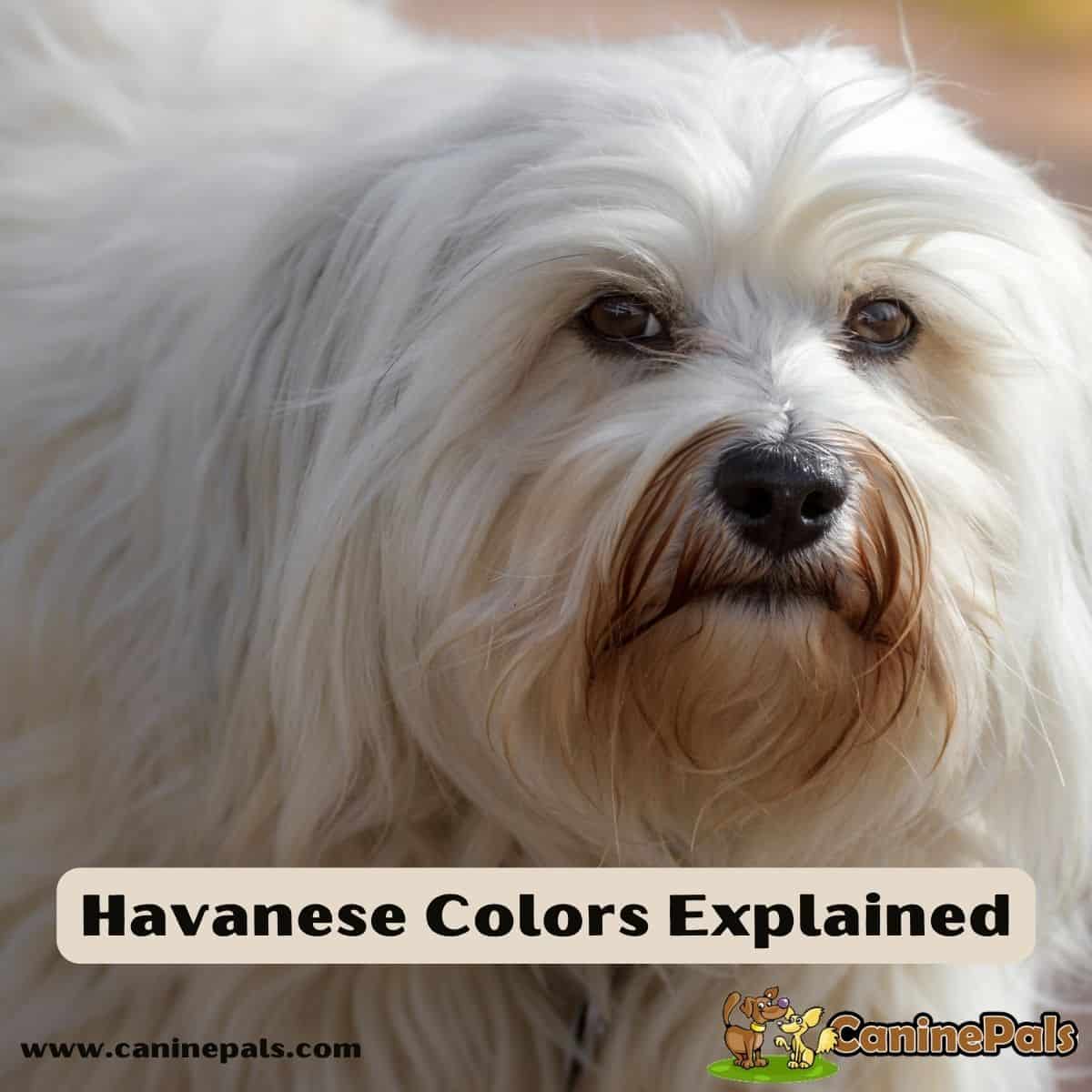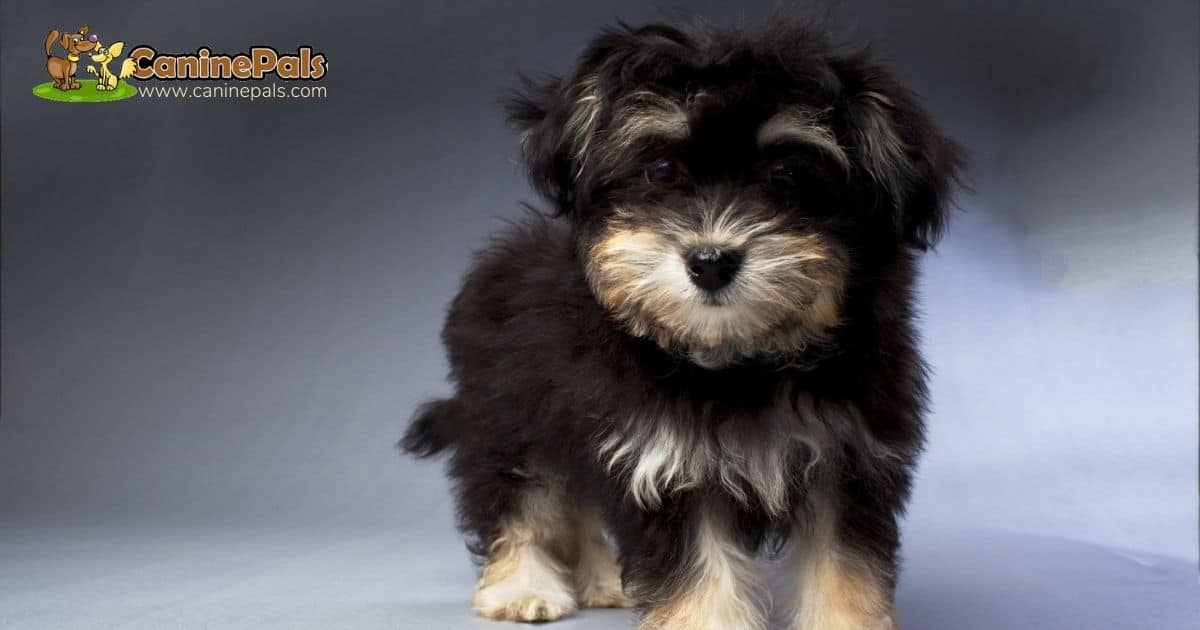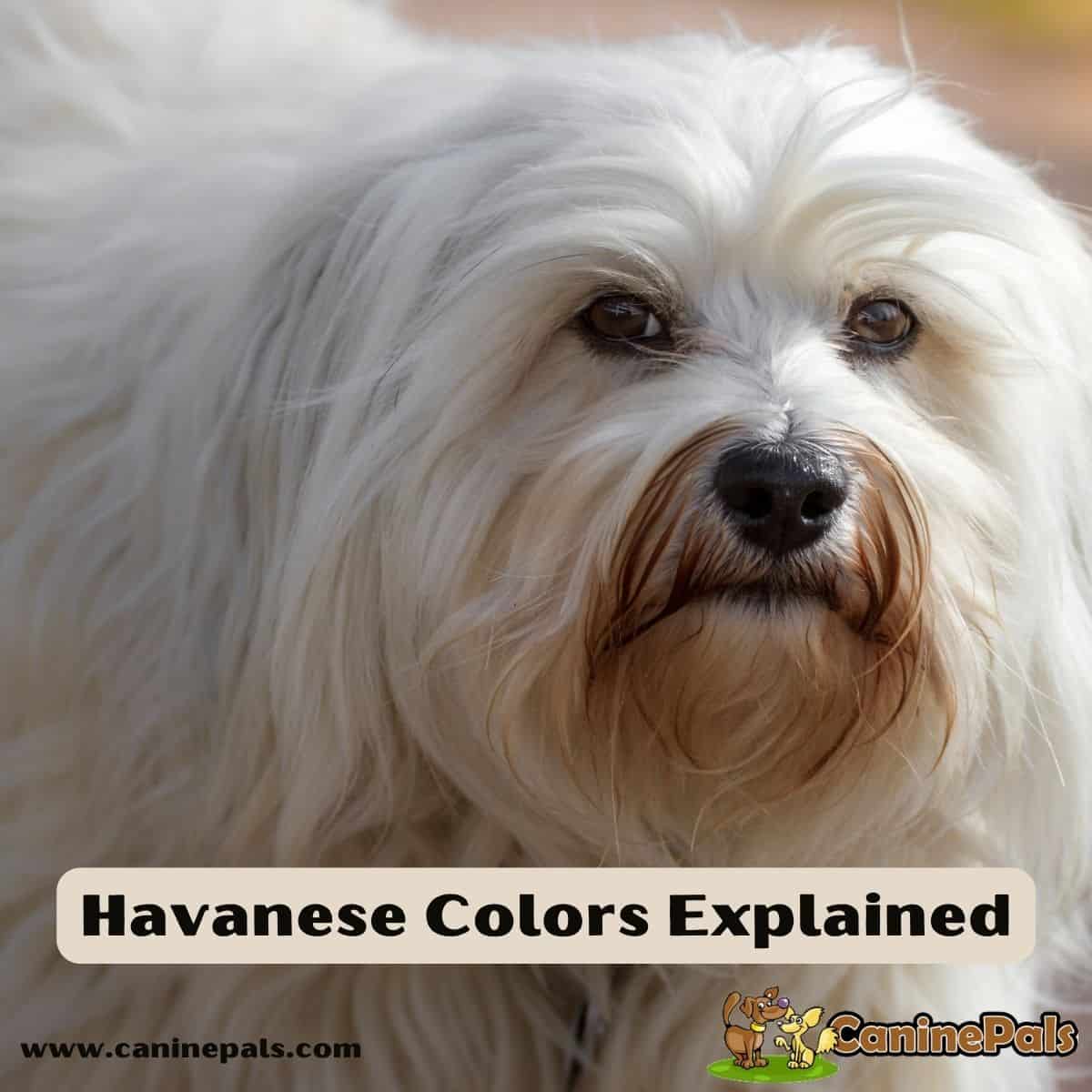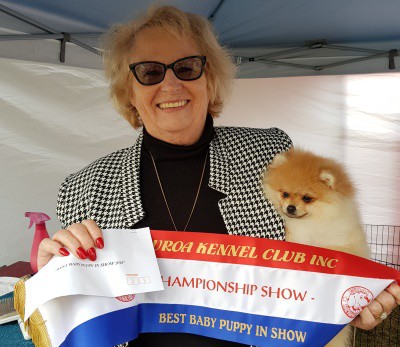Last Updated on March 8, 2024 by Denise Leo. Post first published on April 9, 2023.
Many dog owners today pick their puppy based on their tastes and preference. Havanese colors come in a remarkable array of shades and patterns.
If you are trying to decide what color Havanese to bring into your home, read about the different Havanese colors.
About Havanese Dogs
Havanese are cheerful little dogs that are neither fragile nor overdone. They’re small, sturdy dogs of immense charm that is known for their intelligence and easy-going nature.
The Havanese dog breed is funny dogs with a sweet and friendly temperament. These companion dogs usually get along with everyone. They are full of energy and have a zest for life.
- Havanese are small, sturdy dogs that are friendly, energetic and full of life.
- The AKC recognizes 16 different colors and eight types of markings or patterns for Havanese.
- Among the most popular colors are black, black & silver, black & tan, chocolate, cream, fawn, gold, red and red brindle.
- White markings, tan points and cream markings are some common color markings seen in Havanese.
- Havanese puppies often change color as they develop and can be difficult to identify at birth.
- Black is the most popular color of Havanese overall.
Let’s have a look at the important stats that you need to know about Havanese:
| Stats | Description |
| Bred for | Companionship |
| Overall Grooming Needs | High |
| Coat Length | Medium |
| Average Height | 8 to 11 inches tall at the shoulder |
| Average Weight Range | 7 to 13 pounds |
| Energy Level | Energetic |
| Exercise requirements | 20 – 40 minutes per day |
| Social/Attention Needs | High |
| Temperament | Playful, Affectionate, Intelligent, Responsive, Companionable, Gentle |
| Tendency to Dig | Low |
| Tendency to Drool | Low |
| Life Expectancy | 12-15 years |

What Havanese Colors Are Officially Recognized By The AKC?
Havanese dogs are popular for having diverse coat color patterns and combinations. You’d be surprised just how colorful the Havanese is. While Havanese can come in almost every color, there are only 16 that are approved by AKC ( American Kennel Club).
You can use these 16 colors and color combinations when registering your Havanese with a kennel club. Also, there are eight further types of markings or patterns.
The diverse markings and colors of the Havanese are just one reason they’re so popular among households. Let’s start exploring these glamorous colors.
What Are The Best Havanese Colors?
The vibrant world of Havanese color is full of striking hues and unique combinations. From the classic blues, blacks, creams, and whites recognized by the AKC ( American Kennel Club) to fanciful fawns, chocolate golds, or brindles – these dogs can come in a spectrum ranging from subtle shades to bold statements, sometimes even with two colors at once like majestic red sable or striking black-and silver!
Havanese Colors and Markings
| Color | Standard Color or Not |
| White | Yes |
| Black | Yes |
| Black Brindle | Yes |
| Blue | |
| Blue Brindle | |
| Chocolate | Yes |
| Cream | Yes |
| Fawn | Yes |
| Gold | Yes |
| Gold Brindle | Yes |
| Gold Sable | Yes |
| Red | Yes |
| Red Sable | Yes |
| Red Brindle | Yes |
| Silver | Yes |
| Silver Brindle | Yes |
| Black & Tan | Yes |
| Black & Silver | Yes |
| Fawn Brindle | |
| Fawn Sable | |
| Chocolate Sable | |
| Chocolate Brindle | |
| Black & Tan Brindle | |
| Black & Silver Brindle | |
| Silver Sable |
Whichever colored Havanese you choose to get, I can assure you that you will have a best friend that will make your days much better and happier.
- Black
Black Havanese are among the most common and popular dogs. They have a deep, black color with a glossy shine. Solid colored dark black Havanese dogs should have all black fur from head to toe and tail.
Most black Havanese will also have some brown, white, or silver color on them. Strictly speaking, the black Havanese should not have markings in any other color anywhere on their body. They don’t change color even as they grow older, unlike most other Havanese color variations.
- Black & Silver
Black and silver are among the most eclectic color combinations in the Havanese dogs. For the most part, black and silver Havanese dogs have a mainly black coat with silver markings, usually on the face and paws. In some cases, the black and silver fur appear mixed all over the body for a dark, ashy aesthetic.
- Black & Tan
Black and tan Havanese dogs are unique and beautiful but rare. Black is the predominant color in this case and appears on most parts of the head, torso, limbs, and entire tail. The tan markings are limited mainly to the face on the muzzle and over the eyes. The tan fur may also appear on the neck, fore-chest, and paws.
- Chocolate
Havanese chocolate dog’s coat color can vary from a very light Café Au Lait color to a very dark chocolate color. Chocolate Havanese dogs must retain at least a 1-inch patch of chocolate hair. The chocolate shades in Havanese can stay the way it was at birth, lighten up, or get darker over the years.
- Cream
Cream Havanese can range from an off-white color to a light tan color. The coat can also have golden undertones. Cream Havanese can also have patches of various shades of cream. Their coat can lighten as the puppy ages until it appears almost white.
- Fawn
Fawn Havanese are light brown to dark blonde. They can have patches of white or dark brown as well. Lighter hair is often present on the chest and stomach, while darker hair is on the head, back, and ears.
- Gold
The color manifests in vivid and gleaming forms before developing into a more subtle shade. Gold color can range from a sandy brown to an apricot color. The back, head, neck, and ears are often a dark shade of tan. Some Havanese will lose their gold color as it fades away with age.
- Red
While technically considered red, these Havanese look orange in the light. Red Havanese can have orange to dark reddish-brown coats, with reddish-to-brown tones. They can also have patches of white and light brown. The red color is mostly visible in puppies as Havanese coats change color as they age.
- Red Brindle
A Red Brindle Havanese looks like they have black stripes on a red coat. They’re often described as tiger-striped, but brindle Havanese doesn’t look much like tigers. Havanese born with a Red Brindle coat pattern carries a particular recessive gene.
- Red Sable
Sable Havanese dogs have dark tip markings on lighter red fur. The sable markings do not always appear uniformly over the entire coat. In some Havanese dogs, the sable tip markings may spare some parts of the coat.
- Silver
Listed by the AKC as an acceptable color for Havanese, silver can range from a soft gray to a dark smoky color. They’re born with dark hair, but it lightens as they get older.
Silver Havanese are generally pale in appearance but have a silvery sheen to their coats. They have black pads, eye rims, lips, and a black nose. Some Havanese born black “transition to a more silver color coat” as they age.
- White
Solid white coats do exist, but sometimes other shades creep in. White Havanese can be pure white or have patches of varying shades of white. The nose will still be black on a white Havanese.
- Black Brindle
You can easily recognize a black brindle Havanese by their black base coat having irregular light fawn streaks all over their body. Depending on the mixture of black and fawn hairs, these Havanese can range from very dark to light. They usually have a black nose and dark-colored eyes.
- Silver Brindle
The combination of a silver and brindle coat is quite rare, but it can occur. The silver brindle pattern features shades of silver as the base color with black stripes on top. Both parents have to carry a brindle gene to get a brindle puppy. The brindle pattern may cover the whole body or be on the colored part of the dog.
- Gold Brindle
The gold brindle pattern typically features shades of gold as the base color with black stripes on top. The coloring can vary considerably, depending on other coat genes that are present.
- Gold Sable
These coats are distinguished by darker tipping on a lighter gold-colored undercoat. The dark patches appear on the lighter part of the dog’s fur. The sable points are not always all over the coat. In some cases, sable markings may appear on only certain parts of the Havanese coat. When a Gold Sable Havanese is a puppy, he can have dark patches, but as he grows up, those patches slowly fade and are not so noticeable.

Havanese Markings
Let’s take a look at the many color markings on Havanese.
- White Markings
- Tan Points
- Cream Markings
- Parti-Color
- Silver Markings
- Irish Pied
- Silver Points
- Parti Belton
Havanese colors can change while they’re growing up, so it can be hard to tell what coat color the Havanese dog will be when they reach adulthood.

Do Havanese Puppies Change Color?
Havanese dogs are born with a coat of soft fluff and only start to lose this puppy coat once they reach 6 to 12 months of age. As they begin to develop their mature coat, their coloration may change. This change is either darkening or lightening, depending on their genetic makeup.
Solid black-and-white coats are less likely to change, but most other colors will have some change. Brindles and sables are the most likely to fade or lighten. This is due to each dog’s specific genes.
Because Havanese change color as they develop, identifying a Havanese correct color at birth can be extremely challenging. Oftentimes if the parent has a coat that has changed color, their offspring will too.
What Is The Most Popular Color Havanese?
Black Havanese is the most popular color of Havanese. The black color gives them a silky, glossy shine that everyone is crazy about. Also, the white Havanese, along with silver and cream, is very popular among Havanese.

Conclusion
The diversity of rich colors and patterns makes Havanese the canine equivalent of a box of chocolates when it comes to the best Havanese color, that will be a personal choice.
Regardless of the color of Havanese you choose, you’ll end up with a loving four-legged companion who will stay by your side and bring you years of happiness and companionship.
Hope you enjoyed reading this article! If you have any comments, please do let us know. We would be happy to hear from you.
Copyright CaninePals.Com. All Rights Reserved.
References and Further Reading:


